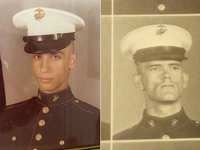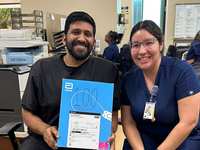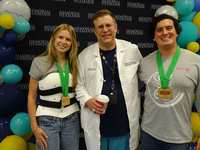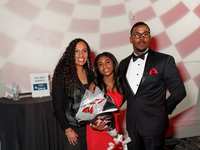- Sections :
- Crime & Public Safety
- Restaurants & Food
- Sports
- More
From the Womb and Beyond: Wyatt Hughes and His Journey with Agenesis of the Corpus Callosum
THE WOODLANDS, TX -- Eleven-year-old Wyatt Hughes has had a rocky life from the very beginning. His journey, shared through the eyes of his loving parents, Jason and Kelly Hughes, offers insight into a rare brain disorder and aims to create awareness about Agenesis of the Corpus Callosum (ACC).
Agenesis of the Corpus Callosum is a congenital condition where the brain structure connecting the two hemispheres—the corpus callosum—is either partially or completely absent. It’s a relatively common brain malformation, yet the severity of symptoms can vary widely. Some people are asymptomatic, while others live with significant neurodevelopmental disabilities.
Wyatt’s mom, Kelly, takes us through the beginnings of their journey.
“Not to get too personal, Jason and I went the fertility route to try and get pregnant. I was an older mama… as they say, I was of ‘advanced maternal age’—35 years old. We decided IVF (In Vitro Fertilization) was our best route after a diagnosis of unexplained infertility, as our chances of getting pregnant on our own were very slim.
So, after one round of IVF, our pregnancy was very monitored throughout. We had two embryos implanted, but only one took—our little Wyatt.
I had to go in for regular visits, and in doing so, the doctors discovered I had Placenta Previa. They monitored me to see if I could have a natural birth or if a C-section would be necessary.
During weekly ultrasounds, the doctors noticed the ventricles in Wyatt’s brain were tear-dropped shaped rather than oval. This indicated pressure in the baby’s brain. It wasn’t disclosed to me at first, but the specialist monitored it each visit.
At my 34-week visit, the specialist brought it to my attention and mentioned the possibility of Wyatt having Agenesis of the Corpus Callosum. To confirm, I would have to get a pre-natal MRI at the medical center.”
It’s worth noting that people sometimes confuse ACC with autism.
Kelly continued:
“The following week, Jason and I went to the medical center where I had the MRI scan. During the appointment, we met with a geneticist and neurologist. They gave us the most unimaginable diagnosis and outcome for our Wyatt.
They explained that this disorder is a spectrum disorder, and there was no way to predict Wyatt’s future. They told us one in 1,000 people have it, and the only way to diagnose it is through an MRI.
The possibilities ranged from never walking, talking, or eating independently to leading a normal life with some learning disabilities.
They did tell us it was an isolated brain issue with no other abnormalities, but only time would tell. We were devastated—but determined. No matter what, he would be loved and supported fully.
Just three weeks later, I had a scheduled C-section at 39 weeks. Everyone was prepared—NICU doctors and neurologists were present in the OR.
When Wyatt was born, they whisked him away for testing. He scored 9.0 out of 10 on the Apgar scale. We had a perfect, healthy 7.3-pound baby boy. No need for NICU.
The next day, an MRI confirmed the diagnosis: Agenesis of the Corpus Callosum.”
After bringing Wyatt home, things seemed normal.
“His first two years were filled with doctor visits—occupational therapy, physical therapy, speech therapy, neurology. Every single specialist said the same thing: he was reaching all his milestones. Most said they didn’t need to see him again.
Honestly, if we hadn’t known the diagnosis in utero, we wouldn’t have suspected anything at all.”
But as Wyatt got older, school became more difficult.
“He struggled with processing, abstract thinking, reasoning, and critical thinking.
He is a social butterfly with a heart of gold—not one competitive bone in his body. He’s somewhat unaware of social surroundings. He has lots of friends, but can be awkward in conversations.
He loves baseball. The first time he connected the bat to the ball, I cried. Same with riding a bike—something doctors said he might never be able to do.
He’s a Fortnite genius—if only he put the same energy into schoolwork! (Laughs)
We told him about his brain disorder when he was in elementary school. He didn’t quite understand at the time. But now he knows he was born with a unique brain, and that things might take longer to figure out. He accepts it and just goes with the flow.”
Kelly is part of several online ACC groups.
“So many people are misdiagnosed with autism. Unless a brain scan is done, ACC is very hard to detect.
There’s no telling what the future holds. Middle school is a tough time for any kid, but we deal with things as they come.
Wyatt receives special education services at school. He gets small group testing, classroom accommodations, and has been diagnosed with ADHD. He takes a non-stimulant medication, which is common among ACC kids.
It’s hard to tell what’s ACC, what’s ADHD, and what’s just being an 11-year-old boy.
As a teacher, my biggest advice is this: be your child’s biggest advocate. We learn from the Facebook community and apply that knowledge every day.
I’m constantly looking for more data. Some studies say 1 in 10,000 have ACC, others say 1 in 4,000, and some say 1 in 1,000. Every day, more parents are learning their child has this diagnosis.”
In speaking with Jason and Kelly, I shared my own family story—how my brother Ted was diagnosed with autism in the 1950s, when very little was known about the condition. Doctors were amazed at how well he functioned by age 12. They believed part of his success came from the fact that we never treated him differently. I wondered if Wyatt’s remarkable growth could be credited, in part, to his family dynamic.
I asked Kelly to describe what family life looks like in the Hughes home.
“Our family dynamic is very typical. We don’t treat Wyatt any differently than the other boys. His brothers look up to him as the big brother—even though that doesn’t stop the frequent roughhousing!
Wyatt is more sensitive and calm compared to his younger brothers, but he still gets rowdy. Their bond is special.
Our number one rule is kindness—in everything. We expect polite manners and giving your best effort. We’re still working on chores—but that’s a work in progress.
I’ve told the boys that everyone learns differently. Wyatt’s best might look different from theirs.
My middle son excels easily in school and sports, so I push him a little harder. It’s just understood, and all the boys accept it.
I’m protective of Wyatt, but we don’t want to create a crutch. Jason and I want him to learn and grow, and not let this disorder hold him back.”
Wyatt turns 12 in August. His journey has included challenges no child should have to face. But thanks to a loving family and devoted parents, many of life’s obstacles are more manageable.
Getting to know Jason and Kelly, I found myself in the presence of something extraordinary. They are the very definition of “salt of the earth” people—steadfast, grounded, and full of heart.
I can only hope that every child born with a condition like ACC has parents as devoted as Jason and Kelly to guide them through life’s hurdles.
As I left our conversation, the evening was calm. But as I sat in my car, I noticed I had wind in my eyes.
If you feel your child might have ACC, ask your pediatrician for a referral to a neurologist. A brain scan is the only way to diagnose it.
For more information, visit: www.nodcc.org
There are also several helpful Facebook groups for ACC families.










